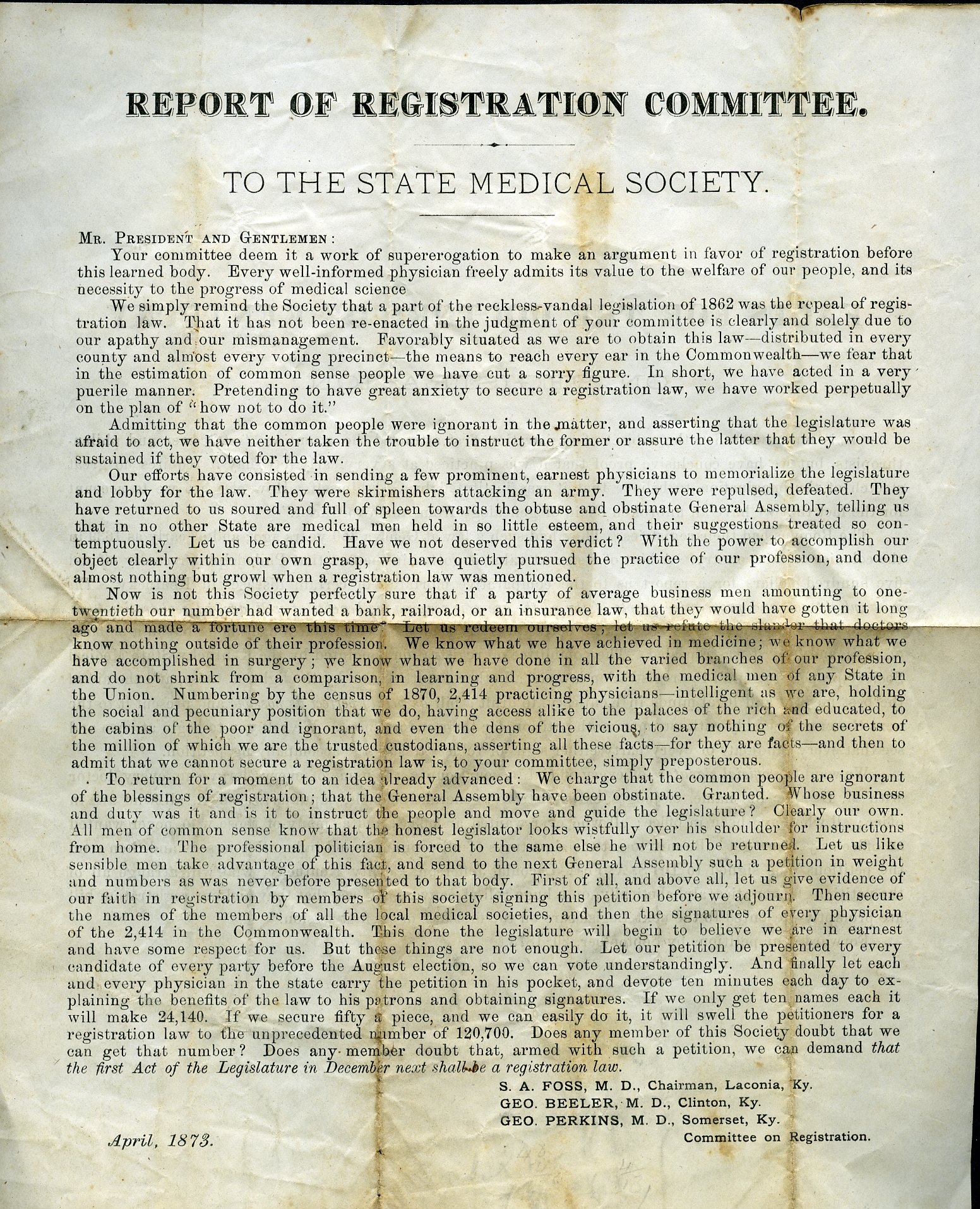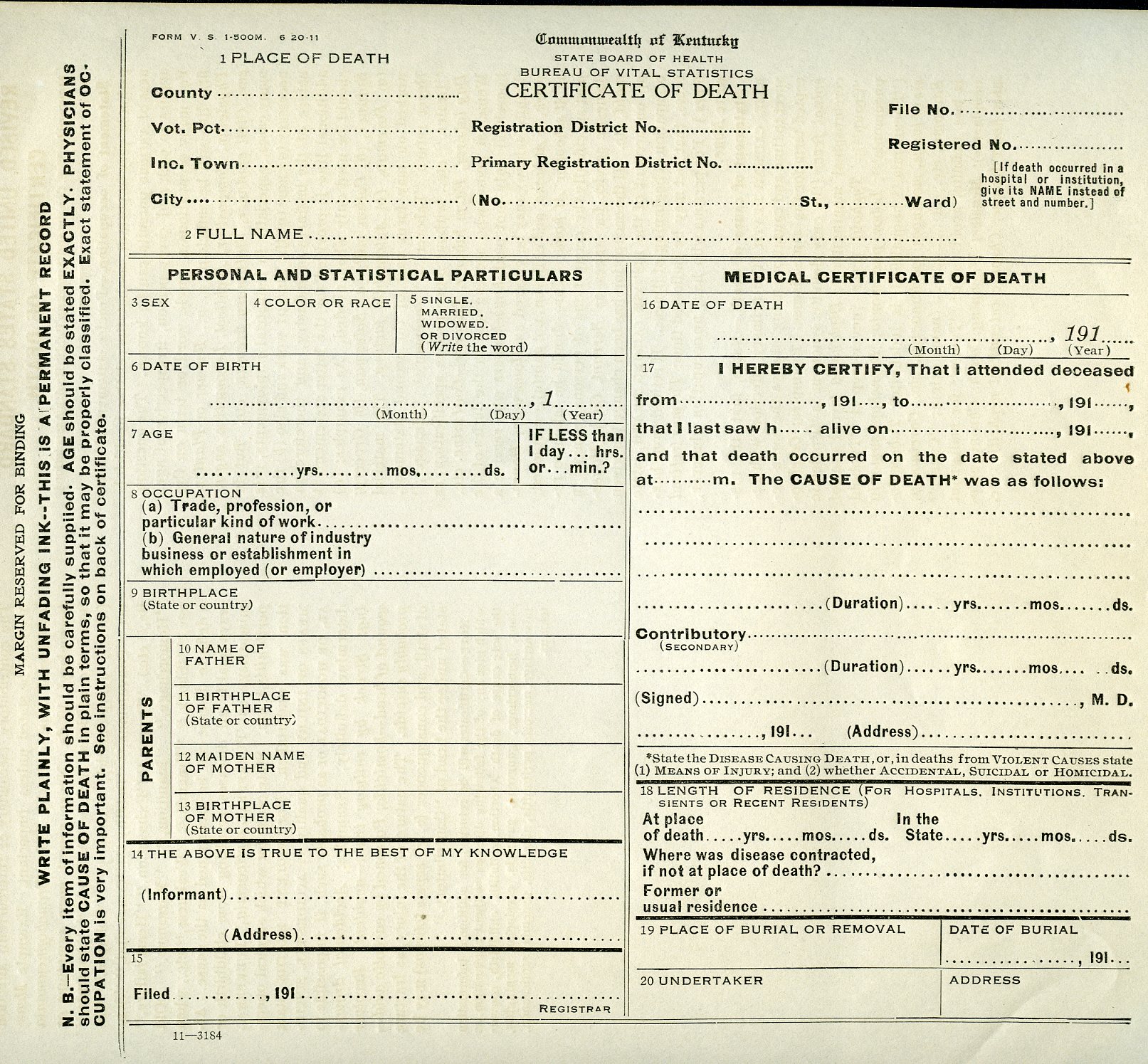
Just like a difficult birth, Kentucky faced painful hurdles in enacting a law for the registration of vital statistics. The value of recording such facts was noted as early as 1821 by Kentucky’s General Assembly which required registration for all children between the ages of four and eighteen. This occurred 15 years earlier than the civil inauguration in England. It was not until 1852, however that the state passed a law for all births, deaths and marriages and the production of an annual statistical report. In 1859, the Office of Registrar of Vital Statistics was also created. But, with the advent of the Civil War, all registration efforts ceased until 1873. A recently acquired broadside for Library Special Collections, highlights Kentucky physicians’ call for vital statistics registration. The flyer is addressed to the State Medical Society offering an argument in favor of starting this important task again. The report of the Registration Committee to the State Medical Society is laced with clear judgments on the apathy of the profession and the “reckless-vandal legislation of 1862” which repealed the law. The committee notes that most doctors have “acted in a very puerile manner,” and “have worked perpetually on the plan of ‘how not to do it’!”
A political climate, very familiar to us today is showcased by certain physicians who tried to deal with the government, but returned, “soured and full of spleen toward the obtuse and obstinate General Assembly.” The doctors also condemned themselves for their low-key approach to the problem noting it was but a growling effort not worthy of such a cause.
The flyer calls for renewed efforts by the 2,414 practicing physicians “whose business and duty [is] it to instruct the people and move and guide the legislature.” A call was issued for the physicians to grab every signature of “all who are in office, all who have been in office; all who ever wanted an office and as many of those who never wanted an office as you can get.”! In essence, every person in the state should be approached. Why God himself must have approved of such labors, as it is noted that “an unbroken chain of genealogy [existed] from Adam to Christ.” A little hyperbole in the flyer went a long way and proved successful as the law was passed. Sadly, however, no central office was created to enforce, safeguard or compile the statistics.
It would not be until 1910, when the State Board of Health was successful in passing the present law that vital statistics registration was successfully implemented. Birth and death registration was enacted statewide on 1 January 1911, and mostly adhered to by 1920. The blank death certificate shows how valuable the information obtained can be for many types of research.
The Baird Fund, established by former DLSC faculty member Nancy Disher Baird, funded acquisition of this document. “The Baird Fund has been an invaluable tool in helping us grow the collection,” said Jonathan Jeffrey, DLSC Department Head. “We appreciate Nancy’s generosity and her foresight.”

See this wonderful flyer and other materials related to medical history in our holdings, visit TopSCHOLAR or browse through KenCat, our searchable database featuring manuscripts, photographs, and other non-book objects housed in the Department of Library Special Collections.
